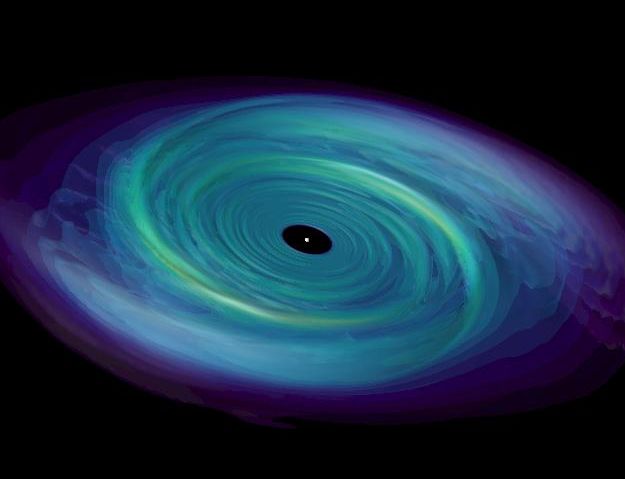 |
Астронет: Астрономическая картинка дня Моделирование аккреционного диска http://variable-stars.ru/db/msg/1204821/eng |
Credit & Copyright: Michael Owen,
John Blondin
(North Carolina State Univ.)
Explanation:
Don't be fooled by the familiar pattern.
The graceful spiral structure seen
in this computer visualization does not portray winding spiral arms in
a distant galaxy of stars.
Instead, the graphic shows spiral shock waves in a three dimensional
simulation of an
accretion disk -- material swirling onto a compact
central object that could represent a
white dwarf star,
neutron star,
or black hole.
Such accretion disks power bright
x-ray sources
within our own galaxy.
They form in binary star systems which consist of a donor star (not
shown above), supplying the accreting material, and a compact object
whose strong
gravity ultimately draws the material towards its surface.
For known
x-ray
binary systems the size of the accretion disk
itself might fall somewhere between the diameter of the Sun
(about 1,400,000 kilometers) and the diameter of the
Moon's orbit (800,000 kilometers).
One interesting result of the
virtual reality astrophysics
illustrated here is that the simulated
disk develops instabilities
which tend to smear out the pronounced spiral shocks.
Authors & editors:
Robert Nemiroff
(MTU) &
Jerry Bonnell
(USRA)
NASA Web Site Statements, Warnings,
and Disclaimers
NASA Official: Jay Norris.
Specific
rights apply.
A service of:
LHEA at
NASA /
GSFC
& Michigan Tech. U.
